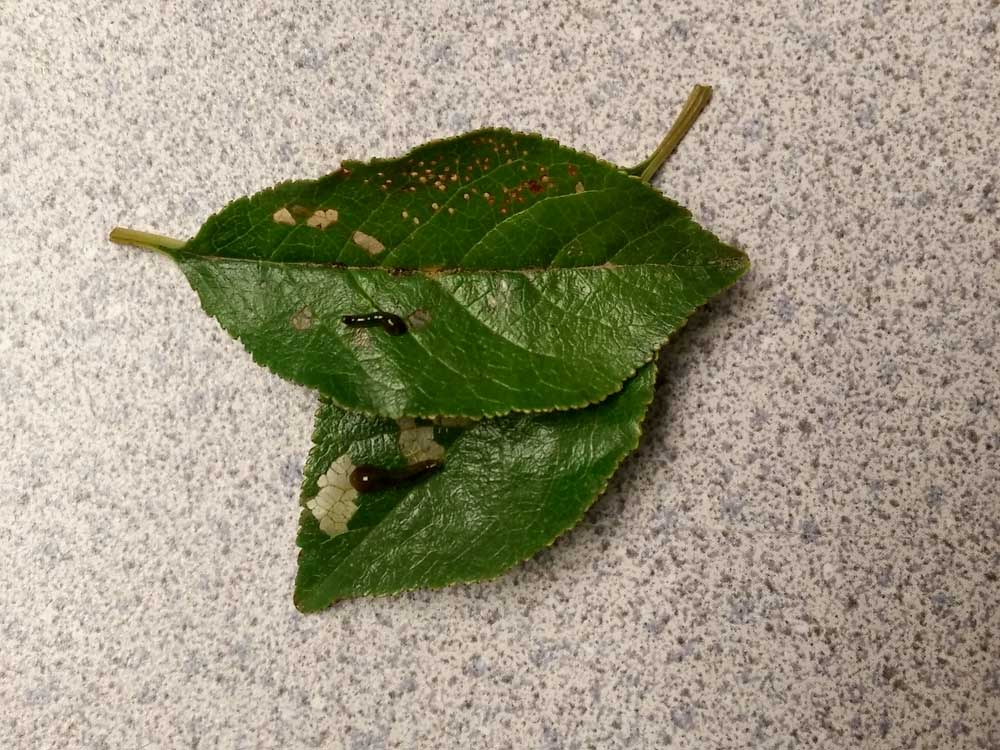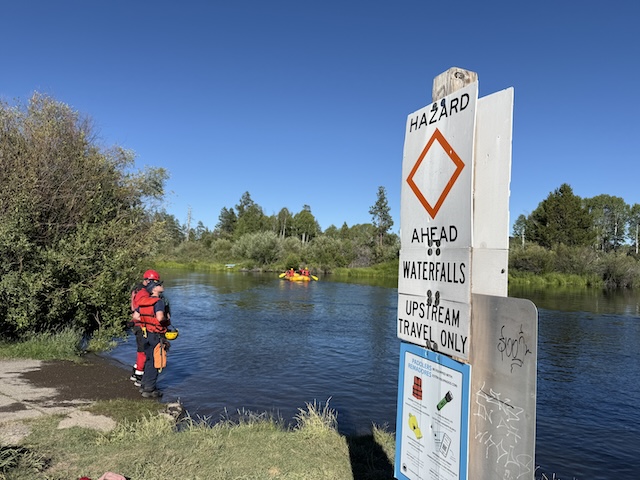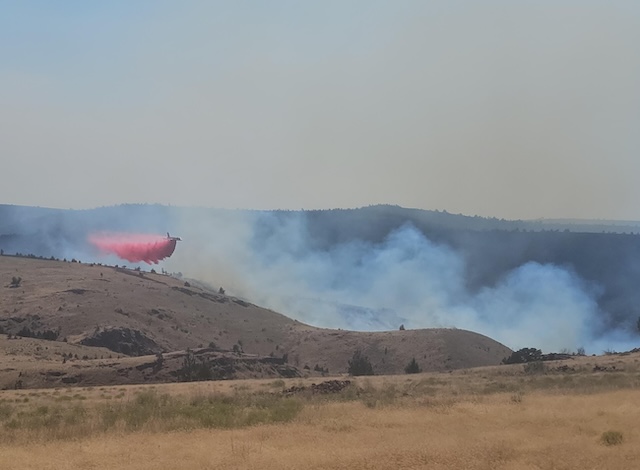What’s the worm-like thing eating my purple-leaf plum?
Published 12:02 am Tuesday, September 5, 2017

- These purple-leaf plum leaves have been chewed on by a sawfly. (Toni Stephan/Oregon State University)
Q: What are those greenish, slimy wormlike things eating the top surface of the leaves on my purple-leaf plum?
A: These are the larvae of a nonstinging wasp called a sawfly. They are called either pear slugs or cherry slugs.
Trending
We have two generations of these in Central Oregon. The first generation is visible around mid- to late-July. This generation is generally low in numbers and does moderate amounts of damage. The damage appears on the tops of leaves and appears as missing green tissue of various sizes.
The leaf dries out in the chewed areas and becomes brown, with visible leaf veins remaining. Sometimes these brown spots dry out and drop out of the leaf leaving holes of irregular shapes. After three to four weeks of feeding the larvae drop to the ground to pupate.
Around the end of August or early September we will see the second generation of larvae begin to emerge. The larvae will be feeding for several weeks, and then will pupate in the soil until next year when the cycle begins again. This generation is usually larger in number and does more damage to tree and shrub leaves. The damage that pear slugs create is generally aesthetic and most healthy plants can tolerate it. Plants that are under unusual stress may need some relief from these pests.
Host plants include but are not limited to purple-leaf plum, hawthorn, mountain ash, aronia, cotoneaster and many fruit trees. If plants are small and there are not too many larvae, control can be as simple as squishing or spraying the plant with a strong stream of water to knock the larvae off the leaves. Wood ashes blown onto the larvae will also destroy them. Low-toxicity chemicals that are effective on pear slugs include insecticidal soap, kaolin clay and spinosad. Be sure to read and follow the label on chemical products.








